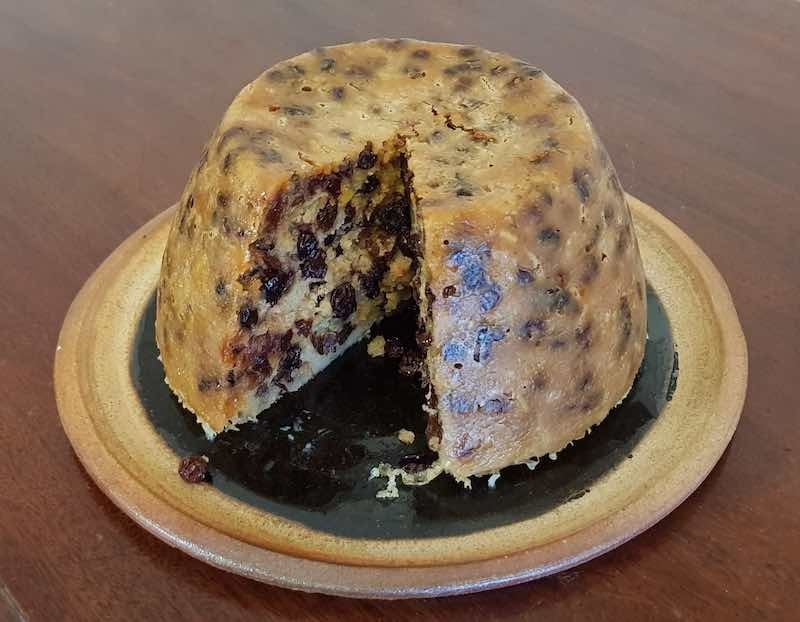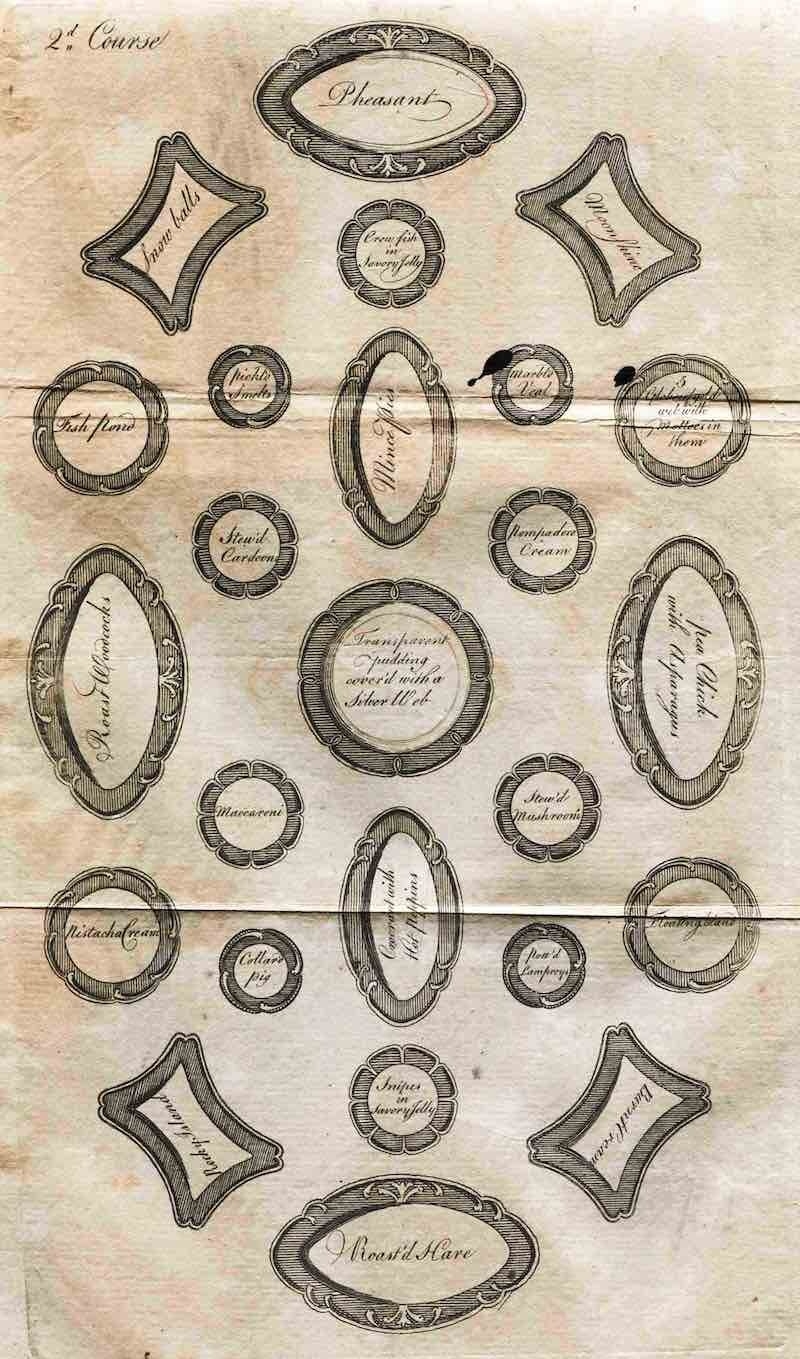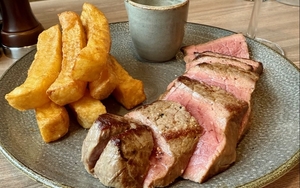Neil Sowerby reviews Dr Neil Buttery's biography of the groundbreaking cook
ECCLES cakes and orange custards. Blame it on a pair of puddings for a mutual obsession with the greatest English cookery writer you may never have heard of. My own interest in Elizabeth Raffald was piqued a decade ago during research for Crispy Squirrel and Vimto Trifle (MCR Books) by chef Robert Owen Brown. She was one of his culinary heroes and when we included a recipe for Eccles cakes it turned into a homage to this 18th century professional cookery writer/entrepreneur, who led a remarkable life. Not just as housekeeper of stately Arley Hall (above).
Her own hugely influential The Experienced English Housekeeper of 1786 contained a ’receipt’ for ‘Sweet Patties’ that’s not a million calories from Eccles’ finest, even if the ingredients include boiled calf’s foot, apples, oranges, nutmeg, egg yolk, currants and brandy, in puff pastry, and it could be baked or fried.
Elizabeth can also lay claim to creating the first English wedding cake, as we know it
Meanwhile Dr Neil Buttery, scientist and fledgling food historian, had already chanced upon Mrs Raffald’s recipe for Seville orange custards in English Food by the great Jane Grigson, another Raffald fan. Neil famously went on to blog his attempts to cook every recipe in her 1974 classic. Now finally he has authored a biography of Elizabeth Raffald that encompasses the huge impact she had on Manchester beyond the dishes she created and catalogued so brilliantly. It’s enthralling.
That the book is titled Before Mrs Beeton is a polemic provocation. Brand Isabella Beeton has never faltered since her untimely death at just 28 in 1865, four years after the publication of her Mrs Beeton’s Book of Household Management. Dr Buttery points out chunks were compiled by anonymous contributors with much copying of recipes and her husband soon sold the copyright, allowing it to be modified over successive editions. “Contrary to public perceptions,” he writes, “Beeton is less the Nigella Lawson or Delia Smith of her day and more the Colonel Sanders.”

Contrast with Elizabeth Raffald, the real deal, publishing 800 recipes, most tried and tested by herself. Indeed the only time this stellar cookery phenomenon “missed a trick”, in Buttery’s words, was with those prototype Eccles cakes, which she developed at her bakery shop in Manchester’s Market Place.
The Guardian at the time reported “a worthy female leaving her, and going to settle at Eccles, Mrs Raffald made her a present of the recipe for this dainty, which made the recipient’s fortune, and that of her niece, who succeeded her in the business – many thousands of pounds having, we are told, been realised by this sweet little monopoly.”
Not that every recipe in The Experienced English Housekeeper is as accessible or as ‘monetizable’, to use that dyspeptic tag. Take ‘Rabbits Surprised’ or, my fave, ‘Pigeons Transmogrified’. The first requires “Take young Rabbits, skewer them and when they are roasted, draw out the Jaw-bones and stick them in the eyes to appear like Horns… stick a bunch of Myrtle in their Mouths, and serve them with their Livers boiled and frothed.” The Pigeons get off lightly. They are stuffed into hollowed out cucumbers with heads sticking out with ‘a bunch of barberries in their bills’.

Such elaborate show at table is a legacy of her time as housekeeper at Arley Hall, Cheshire, where her aristocratic overlords loved to unleash a ‘Grand Table’ banquet on their guests – some 75 separate dishes on more than one occasion. Other challenging recipes included one for turtles, using their blood and fins and, of course, an elaborate mock turtle substitute. Yet also in the book you’ll find simple dishes that seem quite modern like the first mention in English cookbooks of macaroni cheese and burnt cream (creme brulee by any other name).
The book is split into three parts – the first dedicated to browning, soups, fish, plain meat, game, pies and puddings, the second covering confectionery and ‘directions to set out a table in the most elegant manner and in the modern taste.’ In the third she discusses pickling, potting and distilling. Eminently practicable if you discount the likes of staggeringly elaborate pastry work. Elizabeth can also lay claim to creating the first English wedding cake, as we know it.
Though she wrote English Housekeeper in Manchester, its gestation was undoubtedly at Arley Hall, four miles from Lymm, where she arrived from her native Yorkshire as Elizabeth Whittaker in 1860. For four years she was housekeeper for Lady Elizabeth Warburton, to whom she later dedicated her book, before marrying the head gardener John Raffald and moving to Manchester. After which it’s really hard to keep up with her hyperactive schedule. In the midst of compiling a series of Manchester business directories – the original ‘yellow pages’ – launching an employment agency and two newspapers, promoting what might be the first ever ‘ready meals’, running shops and public houses, including her own, The King’s Head, she gave birth to at least nine children

Eventually it all went downhill until she died suddenly aged 47, of a stroke or aneurysm, in 1781. Husband John’s alcoholism undoubtedly contributed to the business failure, but Dr Buttery is compassionate: “He’s the perfect scapegoat, the one who caused the collapse of Elizabeth’s empire, hurrying her death as she exhausted herself… but the truth is Elizabeth was working too hard before the coffee house, indeed even before the King’s Head; working too hard was her natural state and something was going to give eventually…Elizabeth’s untimely death released him from the life choices he had regretted, a life that led him into a depression he self-medicated with alcohol, a life that took away his wife. Returning to his beloved brothers and working in the family gardens was the only sensible thing to do.”
Elizabeth was buried in the Old Church family plot in John’s home town of Stockport, but you can’t locate her gravestone because John couldn’t afford to pay for an inscription. That run-down Exchange Coffee House, the Raffalds’ last venture, was on the site of today’s Selfridge’s. Check out the discreet blue plaque to Elizabeth on the side of the store. Market Place, epicentre of her commercial success, was destroyed by World War II air raids. Arley Hall, much changed architecturally from her tenure, remains the sacred Raffald place.
And it’s here that I like to think of Elizabeth in culinary overdrive. This new Buttery book, like its precursor, The Dark History of Sugar, occasionally gets bogged down in heavily researched historical context (nothing that keener editing wouldn’t obviate), but it’s at its best when the author’s deep empathy with kitchen practice comes to the fore. It inspires me to recreate one of those ‘receipts’ that earned Mrs Raffald such a following (including Queen Victoria).

So let’s conclude with an ode to flummery. We are back in the exhausting territory of those Arley banquets with their emphasis on display and munificence. In her book Elizabeth includes a table plan for her ‘Grand Table’. Fortunately diners weren’t expected to devour every dish of the litany of delights – mock turtle soup, broccoli, kidney beans, bottled peas, salad, house lamb, fricassee of veal, a small ham, sweetbreads, ox paletts, ducks almonde, boiled turkey, pigeon compote, chicken fricassee, haricot beans, beef olives, hare soup, florindene of rabbits, pork griskins, larded oysters, sheep’s rumps and kidneys, cod sounds, French pye, lambs’ ears stuffed with forcemeat and transparent soup.
And the flummery then? Her actual menu is mind-bogglingly labour-intensive. With a wacky whiff of Heston Blumenthal about it. Let me quote Dr Buttery’s paraphrase: “Jelly and flummery were the media of choice for 18th century ‘subtleties’. They were made from gelatine derived from calves’ feet, ground hartshorn or, on fast days, isinglass extracted from the swim bladders of sturgeon. (I’m tickled by one of the author’s acknowledgements – “I’m also indebted to Ellie Huxley for going through the rigmarole of making Mrs Raffald’s calves’ foot jelly, so I didn’t have to.”)
“Flummery was a sweetened dish made from the boiling of cracked oat grains in water. The resulting opaque ’stock’ was strained through cloth, flavoured and sweetened. Once cool, it set to a delicate jelly. Elizabeth needed her flummery to form a wobbly, quivering but ultimately stable structure, and therefore made hers from almond milk mixed with calves’ foot jelly, rather like a modern blancmange or panna cotta.”

Don’t even ask how all this segued into gargantuan, moulded creations such as ‘Eggs and Bacon in Flummery’ and the cochineal and brandy driven showstopper, ‘Solomon’s Temple in Flummery’. To find our more you’ll have to acquire Dr Buttery’s excellent tome.
Upstairs and downstairs incarnate, all this endeavour was about creating an “immersive experience for guests while, Elizabeth, the creator, worked tirelessly with her staff out of sight and earshot in the hot, noisy kitchens.”
Before Mrs Beeton: Elizabeth Raffald, England’s Most Influential Housekeeper by Dr Neil Buttery (Pen and Sword Books, £20) is out now.
This story features on Neil Sowerby's website alongside many other stories of food and drink adventures.
Read next - The story of Manchester architecture: Part one
Read again - Elegant city centre boost: holiday house at the Museum
Get the latest news to your inbox
Get the latest food & drink news and exclusive offers by email by signing up to our mailing list. This is one of the ways that Confidentials remains free to our readers and by signing up you help support our high quality, impartial and knowledgable writers. Thank you!
















